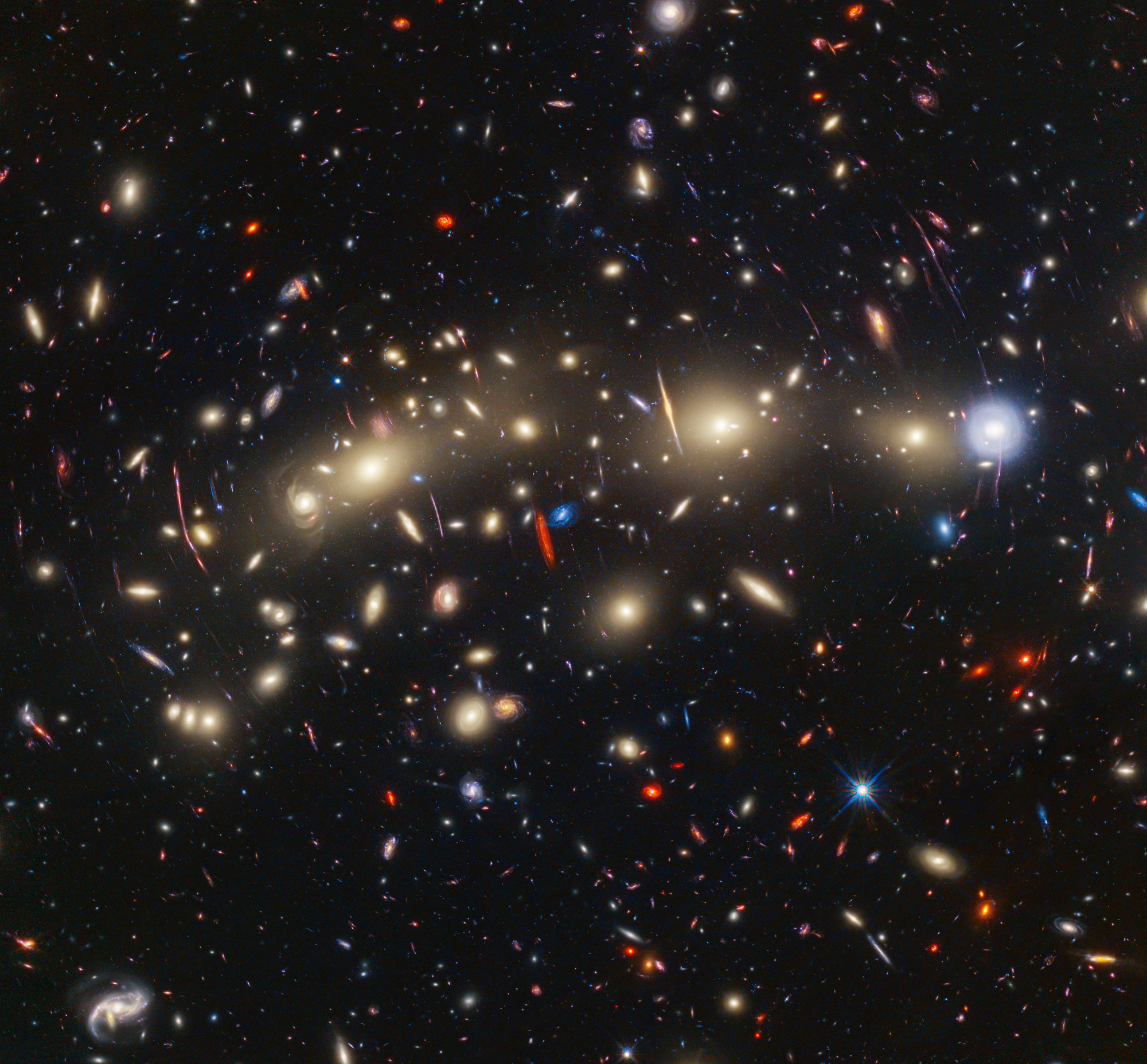If astronomers combined the power of two individually distinct space telescopes, we could certainly expect extraordinary results. Using the James Webb and Hubble space telescopes, experts captured images of the extremely distant galaxy cluster labeled MACS0416, located 4.3 billion light-years from Earth, and its celestial environment. The result was a series of colorful and particularly scientifically interesting observations. The color shade of the galaxies shown in the image primarily reveals their distance. The effect of gravitational lensing can be observed in galaxy clusters, supernovae with gravitationally enhanced light, but also in ordinary individual stars that are otherwise invisible.
Hubble recorded the MACS0416 galaxy cluster and its foreground and background galaxies in the visible image, while Webb recorded it in the infrared wavelength range. As a result, one of the most comprehensive sections of a small slice of the universe to date has been obtained. MACS0416 is actually not a single cluster, but rather a pair of currently colliding and merging galaxy clusters. The combined recording also reveals details that would not have been observed in individual images of one space telescope or the other. We can also see several galaxies outside the cluster in the image. In background galaxies, many details with a distorted appearance due to gravitational lensing and amplification are also visible, but with varying brightness with time.
The ultra-deep images were taken by specialists primarily searching for weaker, older galaxies, as part of a program launched in 2014 using the Hubble Space Telescope. Drawing on Hubble’s legacy, James Webb later joined this survey, greatly enhancing the efficiency of the work with his infrared sensitivity.
In order to create a composite recording painted with false colors for the human eye, graphic artists had to condense an extremely wide range of color images, wavelengths between 0.4 and 5 micrometers, into the visible range, resulting in a dazzling color result. The distance of galaxies can be deduced from their color. The bluest ones are relatively close to us and often undergo intense star formation. The Hubble Space Telescope is more sensitive to these matters. However, the redder galaxies are much farther away and were discovered by James Webb at infrared wavelengths. Other galaxies may appear particularly red (infrared) because they contain a lot of dust, which more effectively absorbs shorter-wavelength starlight. The combined power of both space telescopes was certainly needed to develop the entire image.
Webb’s contribution was needed not only for a more interesting picture. The researchers took several recordings, at four different times, covering several weeks. Thus, changes in the brightness of some objects over time became noticeable in the collection. Astronomers have identified a total of 14 sources of variable brightness. Most of these stars are likely to be background stars or clusters of constant brightness, their brightness temporarily enhanced by gravitational lensing. We can imagine this in some way as if we were looking at the sun from underwater, where its brightness is amplified and weakened by the light breaking on the waves, while the image of the disk is distorted into different sizes and shapes. A smaller group of sources with variable brightness may be very distant supernovae.
Specialists working on the program named the Christmas Tree cluster of galaxies MACS0416 because of the colorful view and faint light sources.
source: WebbTelescope.org
comment












































